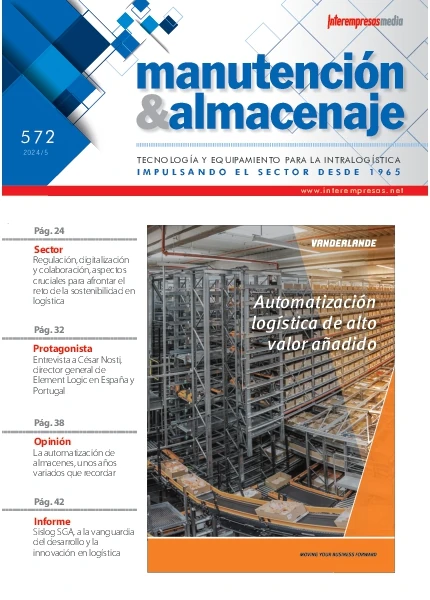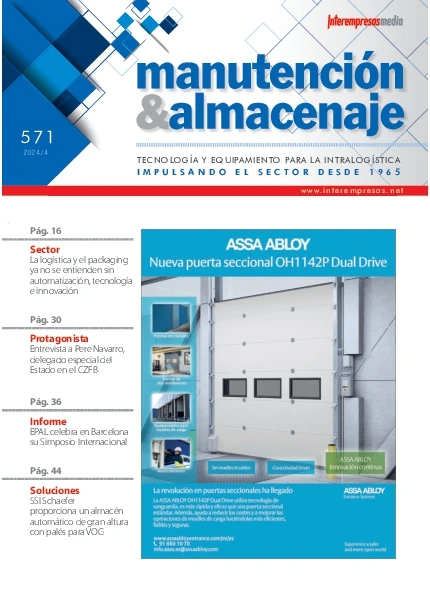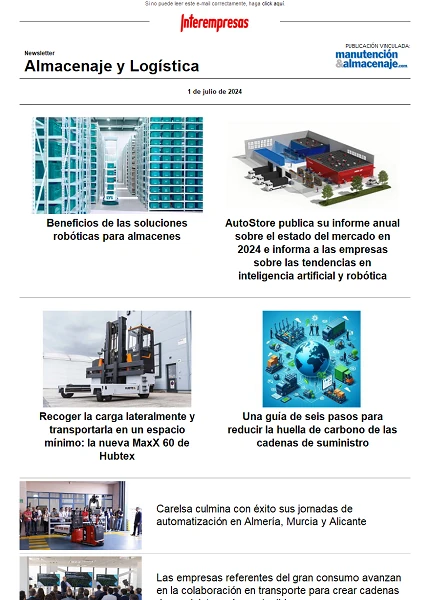Application in Catalonia of the Seveso II directive
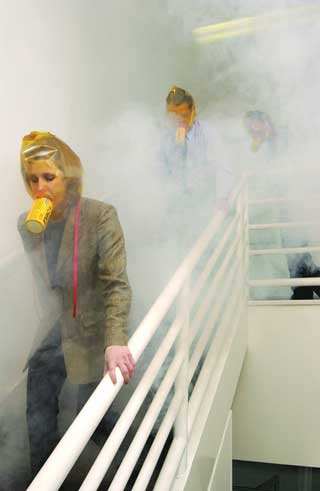
This directive provides for a series of obligations for holders of industrial establishments with certain hazardous substances above certain thresholds. The directive was incorporated into the legal system of the State through the RD 1254 / 1999.
In Catalonia, where donde hay there are located a total of 145 establishments affected by the legislation of accidents serious, the Royal Decree 1254 / 1999 is developed by Decree 174/2001. This Decree contains the procedures and authorities for its implementation, and presents a number of particularities respect for the Democratic Republic of the State, including the inclusion within the procedure provided by law 3/1998 of comprehensive intervention of the environmental management applications for environmental permits in new establishments or substantial changes in the existing.
Finally, we must remember that the Directive 2003/105/EC, which should be incorporated into the legal system of the State on July 1, 2005, amends the directive Seveso II.
Current context
The main objective that we must consider when we manage the security is reasonably reduce the risks in order to achieve a certain level of security.
Normative action in Catalonia
- Seveso I directive and its amendments
- Instruction 12/97 of the DGCSI, on the action as a result of an emergency procedure.
- Rules for the functioning of the guards of location.
- Decree 121/2000 of 20 March, which regulates the sanctioning capacity in the field of industry, energy and mines.
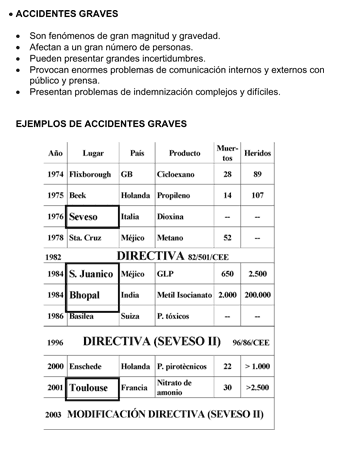
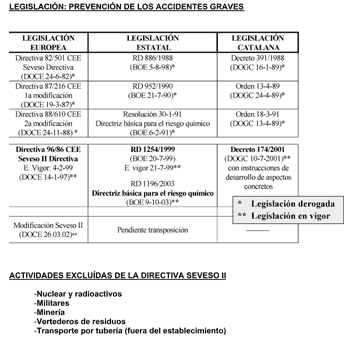
Types of accidents
- Accidents at work: are that they are in the business sector and affect their workers.
- Accidents for breach of industrial safety regulations: Son which can happen with related regulations: AE, BT, APQ, AP, IF, RITE, etc.
By oto side, serious accidents are those that have a great magnitude or gravity, in the sense that they affect a large number of people, may have great uncertainties, cause enormous problems of communication internal and external public and press; In addition to presenting complex and difficult problems of compensation. Examples of serious accidents (table 1).
Catalonia
The proceedings of the General Bureau of Industrial Security in this area are diverse and include the following:
- Authorization of designatio entities.
- Permission of the inspectors of the EIC's (RCTs and ICICT), for the opinion of security (periodic inspections provided for in article 18 of the directive), which act in the verification of compliance with all safety regulations and in the verification of the safety management system.
- Intervention to the EIC: Control by sampling of the proceedings of the CIB's by technicians of the ISMS; and monitoring of the corrections of the defects found.
- Geographic information systems.
- Presence in the working groups of the European Union.
- Protocols for evaluation, inspection and intervention.
- Determination of the establishments affected by effects dominated interestabliment.
- Guards of location.
- Reports of accidents.
- Planning of the territory around the establishments affected by serious accidents.
Competent bodies
- Department of labor and industry (DTI). Prevention.
- Department of the Interior (DI). Civil protection, external emergency plans (PEE).
- Department of environment and housing (DMAV). Authorization, law 3/1998 (IIAA).
Planning of the territory
- Prevent the installation of new establishments affected by major accidents in vulnerable places.
- Avoid new vulnerable elements in proximity of establishments affected by serious accidents.
But, what are the agencies with the "natural" powers? They are as follows:
- Department of Territorial Planning and public works (DPTOP) regulating urban development. Law of urban development.
- Department work and industry (DTI). Prevention.
- City councils.
- Regions.
Bureau of Industrial Security
Subdirectorate General of Industrial safety in the framework of law 3/1998, should draw up a binding report on the DMAH for new affected by legislation Seveso establishments (or substantial changes in existing ones), which introduces criteria of urban planning.
This report is made at the moment according to the guide of the ISMS. As the planning criteria are taken into account the following elements:
- The quantitative analysis of the risk (ACR): individual risk and social risk. Social risk is not binding but if it does not meet the criteria of acceptability gives rise to a specific communication to the DGESC.
- The security Strip.
Both contrasted with regard to the location of:
- Very vulnerable elements (EMV) and vulnerable (EV) elements in the environment of the establishments.
Are currently in review the criteria of the Guide on the basis of five pilot studies. Also, it should be noted that there is a differential treatment by the high level of low level establishments.
Conclusions
However, in today's society we depend in large part of the products of this industry (drugs, plastics, etc.). It is also necessary to assess that it is a very important sector for Catalonia, both because of its economic weight, as for the technological potential that brings.
It is essential to make an effort on all sides to make compatible and sustainable development of this dynamic sector. The Seveso directive and its recent amendments constitutes the legal framework governing the obligations of the involved industrial and administrations.
Consequently, it is necessary to make a responsible and rigorous effort in:
- Research of safe industrial processes.
- Reducing the risks at source.
- Strengthening of the implementation of the legal machinery provided.
- Social awareness of the compromise between safety and production.
In this field, the most notable challenge currently in Catalonia is the planning of the territory in the vicinity of the establishments affected by the directive Seveso, key aspect to combine the development of the sector, ensuring security to the citizens and the environment.

